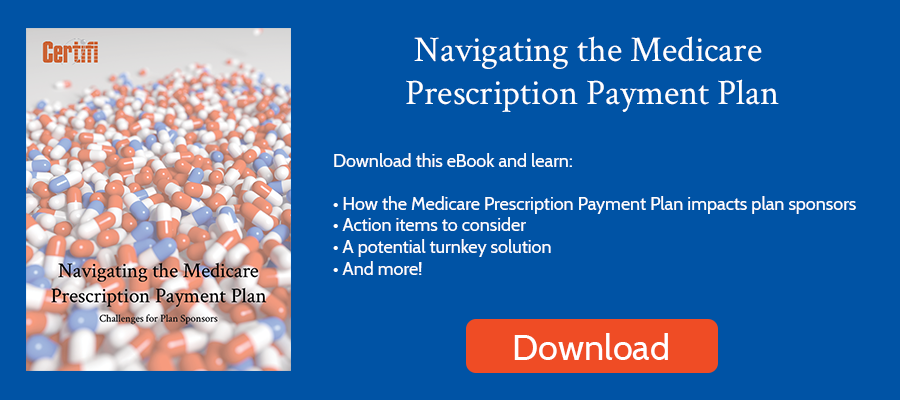In December 2022, the Centers for Medicare and Medicaid Services (CMS) released the Contract Year 2024 Policy and Technical Changes to the Medicare Advantage and Medicare Prescription Drug Benefit Programs proposed rule. Among the rule’s provisions were several changes to how CMS will calculate Star Ratings, helping provide insight into the future of Medicare Advantage Star Ratings.
Here’s a brief overview of how the 2024 Medicare Advantage proposed rules will modify the Star Ratings program in the future and how past modifications will impact future ratings.
What Is the Star Ratings Program?
CMS publishes Medicare Advantage Star Ratings for each health plan to help consumers compare Medicare Advantage quality among multiple health plans. The agency uses a one to five-star scale to measure Medicare Advantage health plans. CMS regularly reviews and updates the measures used to calculate the ratings and the methodology for determining the ratings. The agency may add new metrics or adjust the weightings of existing measurements to reflect the quality of care provided by a plan.
Medicare Advantage plans also earn Quality Bonus Payments (QBP) if they score well on quality measures. Health plans that score high on these measures are eligible for QBP. Plans can use those payments to improve benefits or reduce out-of-pocket costs for enrollees. QBP uses the same measures as Star Ratings, and Medicare Advantage plans that achieve higher Star Ratings are eligible for additional funding through the QBP program.
When will the changes included in the Contract Year 2024 Medicare Advantage proposed rule become effective?
The proposed rule has a comment period that ends February 13, 2023, and CMS will likely publish the final rules this summer. Because the Star Ratings typically use data from a preceding measurement year, most of these proposed rules won’t go live until 2026. For example, 2024’s Star Ratings use data from the 2022 measurement year. So rules proposed now won’t take effect until 2026.
2024 Star Ratings
Before we review the changes the 2024 proposed rule may make to Medicare Star Ratings, here’s a brief overview of one significant 2024 modification:
Tukey Outer Fence Outlier Deletion
Beginning in 2024, CMS will use the Tukey methodology to eliminate outliers. The elimination of outliers will impact where Star Rating cut points occur. Cut points are the ranges a health plan’s score on a particular measure needs to fall within to achieve each Star value.
What’s the Impact?
When CMS first proposed the outlier deletion in 2020, it indicated that most outliers were on the low end of the spectrum. Removing those outliers might move the cut lines higher. Moving the cut lines higher would lead to lower Star Ratings for some insurers. Those most affected are near the cut lines. Examining 2018 plan year data, CMS found that 2% of plans would see their Star Rating increase, while 16% would experience a rating decline when implementing the outlier deletion.
2026 Star Ratings
The 2024 Medicare Advantage proposed rule contains several modifications to Star Rating calculations. Here’s an overview:
Patient Experience and Complaints and Access to Care Measure
CMS will reduce the weighting of the Patient Experience/Complaints and Access to Care measures by half. These measures have recently increased, going from a 1.5 weight, to a 2.0 weight in 2021 and up to a 4.0 weight in 2023. That 4.0 weight translates to the patient experience measures comprising nearly 60% of the total rating. At a weighting of 2.0, it drops to about 40%. Based on feedback and the impact on Star Ratings in 2023, CMS decided to drop the weight to 2.0 beginning in 2026.
The Hold Harmless Clause Will Only Apply to 5-Star Plans
In 2018, CMS introduced a hold harmless provision related to improvement measures for contracts with 4 or more stars. CMS designed the clause so plans with high star ratings wouldn’t be penalized should low improvement measures lower their score. CMS calculated the rating with and without the improvement measure, applying the highest score.
For the 2026 year, the hold harmless clause will only apply to 5-star plans. After analyzing the data, CMS found that 4 and 4.5-star plans had room for improvement. Those with an overall 4-star rating achieved 5 stars on only 42% of measures. Even those with 4.5 stars gained a 5-star rating on just over half of the individual measurements. Compare those results to those with 5 stars, who achieved 5 stars on nearly 80% of individual measures.
What’s the Impact?
Plans with 4 and 4.5 stars could see their overall rating negatively impacted if their improvement measures don’t improve year-over-year. Wakely performed an analysis that found as many as 20% of plans may find their Star Rating decrease because of the elimination of the hold harmless provision.
Removal of Cut Point Guardrails
In the 2019 final rule, CMS added guardrails – effective in 2023 – that limited the movement of measure cut points in both directions, preventing those cut points from increasing or decreasing rapidly. In the proposed rule, CMS will remove those cut point guardrails, believing the addition of the Tukey outlier deletion provision will provide similar stabilization while enabling the cut points to reflect market changes in quality.
What’s the Impact?
CMS indicated that they expect the guardrail removal will have a negligible impact.
Removal of the 60 Percent Rule for Extreme and Uncontrollable Circumstances
CMS uses a clustering algorithm to determine the cut points that drive the Star Ratings. When 60 percent or more of a plan’s enrollees exist in Federal Emergency Management Agency (FEMA) designated Individual Assistance areas at the time of an extreme and uncontrollable circumstance, CMS excludes those measures from their clustering algorithm. The rationale: Plans serving locations impacted by extreme events like hurricanes or wildfires shouldn’t impact the cut points or Star Ratings for all plans.
But COVID-19 introduced a dilemma. Because it affected the entire country, CMS would have excluded almost all plans under the 60% rule. CMS chose to temporarily suspend the 60% rule. After analyzing its data, CMS found the rule unnecessary because scores for affected plans do not tend to be outliers.
What’s the Impact?
Likely none, based on CMS’ analysis of existing data and the introduction of the Tukey outlier deletion methodology.
Additional Star Rating Measures
2026 will also see the return of two Star Rating measures:
- Care of Older Adults – Functional Status Assessment
- Improving or Maintaining Physical/Mental Health.
CMS will add four new measurements to Star Ratings:
- Kidney Health Evaluation for Patients with Diabetes
- Concurrent Use of Opioids and Benzodiazepines, Polypharmacy
- Use of Multiple Anticholinergic Medications in Older Adults, and Polypharmacy
- Use of Multiple Central Nervous System Active Medications in Older Adults
2027 Star Ratings
Health Equity Index Reward
The 2024 Medicare Advantage proposed rule also impacts 2027 Star Ratings. One of CMS’ goals is to improve the care of individuals with social risk factors. The health equity index would create a single score summarizing contract performance across multiple social risk factor measures. Social risk factors, like low income, limited education, lack of access to transportation, or living in a disadvantaged neighborhood, can make it more difficult for individuals to access and utilize healthcare services. As a result, social risk factors can lead to poorer health outcomes.
The health equity index would leverage data from existing Star Rating measures from the two most recent measurement years to create a social risk factor score. It would include those who receive low-income subsidies, those dually eligible, and those with a disability as the social risk factor group to be measured.
The health equity index award can increase a Medicare Advantage plan’s overall Star Rating based on a formula that includes the risk factor score and the number of individuals in the social risk factor group.
What’s the Impact?
The most significant impact may come from the health equity index reward replacing the current reward factor that created additional incentives for plans to have consistent performance across measures. CMS’ simulation that replaced the existing reward factor with the new health equity index reward found that just under 2% of plans saw their Star Rating increase, while over 13% saw it decrease.
Conclusion
The average 2023 Medicare Advantage Star Ratings dropped by almost a quarter of a point after seemingly less significant program modifications. Viewed together, the proposals contained in the Contract Year 2024 Policy and Technical Changes could negatively impact Star Ratings even more for unprepared Medicare Advantage plans.
Certifi’s health insurance premium billing and payment solutions help Medicare Advantage payers improve member satisfaction while reducing administrative costs.



